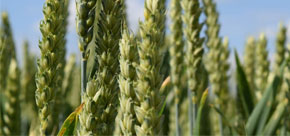Crops & Sugar Beet Standards
RISK ASSESSMENT Version 5.1 (modified)
Click to view
Key – Those standards which have greater significance (all other standards are normal)
Recommendation – Those which do not affect certification
New – A completely new standard which the member must now adhere to
Revised – A standard that has changed and requires the member to take some different or additional action to before
Upgraded – The standard has been upgraded to a Key standard or from a Recommendation to a full standard
Appendix – Referenced in ‘How you will be measured’. Indicates that additional information is provided in the Appendices, which are available at the end of each section.
CR.RA.1 Key
A documented Crop Contamination Risk Assessment must be completed
How you will be measured
CR.RA.1.a
CR.RA.1.b
CR.RA.1.c
CR.RA.1.d
Crop Contamination Risk Assessment (or records demonstrating control of risk)
More Standards
Download Crops and Sugar Beet Standards Manual
Download the changes to the Crops and Sugar Beet Standards from 1 February 2025
